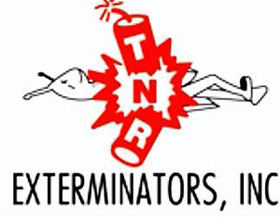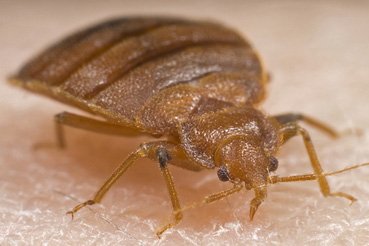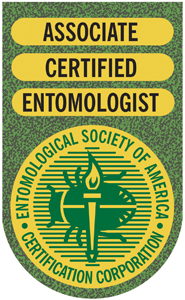Bed Bug Treatment
Treatment for Bed Bugs - Contact TNR Exterminators
(800) 352-3776

We Service The Five Boroughs of New York City, Long Island and New Jersey
Safe and Effective Bed Bug Removal
Human bed bugs (Cimex lectularius) are found throughout the world and are significantly increasing in numbers in North America as well as in many other countries. Even though we do not understand fully all of the reasons behind this increase, we suspect possible contributing factors such as a reduction in the use of urban pesticides, the more extensive world travel of different cultures and resistance to pesticides. This sudden increase in bed bug infestations has resulted in anxiety among the public, increased negative exposure of the hotel industry and a need to educate public health officials and pest control professionals on safe and effective control measures.
To complicate matters, there is a small group of related blood sucking bugs in the family Cimicidae including bat bugs and swallow bugs that can be confused with human bed bugs. It is important to identify the species of bed bug because due to their different habits, proper identification determines where to direct controls to be most effective. For example, bat bugs (Cimex pilosellus) look similar to human bed bugs but control efforts must involve elimination of bats from a structure to be effective.
During the last decade, there has been a significant increase in the number of bed bug infestations reported from homes, resort hotels, apartments, universities and cruise ships. Over time, as society becomes more experienced in recognizing bed bug infestations early and professional pest control companies gain expertise in control, bed bug infestations in communities should decline. This web site is intended to assist you to prevent infestations, understand the identification of bed bugs, recognize the symptoms of bed bug bites, and learn how to get rid of bed bugs if your dwelling becomes infested.
Question: How do you kill bed bug eggs? Do all these spray on products work?
Answer: Most insect eggs are safe inside a shell or chorion which protects them from pesticides. Bed bug eggs hatch in about one to three weeks depending upon the temperature. This would mean a follow up inspection after three weeks would be a good idea. Most residual pesticides last for one month; so theoretically, there should be pesticide still active to kill bed bug nymphs as soon as they hatch from eggs.
Question: How can I determine if my bites are caused by bed bugs? Answer: Itchy bites can be caused by mites, mosquitoes, fleas and lice. To be absolutely sure, you need to collect a bed bug specimen and have it identified by an expert.
Question: How do you kill bed bug eggs? Do all these spray on products work? Answer: Most insect eggs are safe inside a shell or chorion which protects them from pesticides. Bed bug eggs hatch in about one to three weeks depending upon the temperature. This would mean a follow up inspection after three weeks would be a good idea. Most residual pesticides last for one month; so theoretically, there should be pesticide still active to kill bed bug nymphs as soon as they hatch from eggs.
Question: How do I Prepare My Home for Bedbug Treatment? Bedbug preparation checklist Strip the bed(s) and launder all sheets, pillowcases, mattress pads, and blankets. Clean & organize. It is time to throw away things you do not need/want. Remove everything from bedroom closet(s) and place in plastic bags. Remove everything from dresser draws, nightstands, and dressing tables and place in plastic bags. Have all clothing and fabrics laundered or dry-cleaned. Remove drapes & stuffed animals/toys and have them laundered, dry cleaned, or replaced. Remove all pets. Air filters on fish tanks must be turned off. All cages are to be covered. Discard cardboard boxes, shoeboxes, paper and plastic bags, old newspapers, stacks of magazines, and similar items in infested rooms. Vacuum all infested rooms. Beside the floor, also vacuum mattresses, bedsprings, couches, chairs, closets and closet shelves, shoes, inside dresser draws, and bedside table draws. Vacuum bags are to be placed in a plastic bag and discarded.
IMPORTANT NOTES: Discarding of any compromised (ripped/torn) materials or heavily infested items may be required. Discarded items must be damaged & marked to prevent re-use. Dismantling of bed frames and other items will be performed as part of the service program. Items may not be put back in their original form. Should the box spring remain, removal of the cheesecloth underside is required for proper inspection and/or application. Cheesecloth will not be reattached. Mattress bags will be used. Mattresses can be used (back on bed frame) but must remain in these bags for at least sixty days. Linens are to go over the bags. Staining may occur as a result of treatments contacting dry blood. A clutter free environment must be provided in order to allow access for the service technician to treat all of the needed areas. Any laundered items must use a hot water & hot dryer cycle. Avoid moving items from heavily infested rooms/areas to other less-infested rooms. Before re-entry all bagged items must be inspected for pest activity by client. The client should not touch or move any monitoring/control device. Re-entry less than 2 hrs into the treated areas is not permitted. Only pest control operators are permitted in the area during treatment. “Booster” insecticide treatment MUST NOT be performed by the client.
We Service The Five Boroughs of New York City, Long Island and New Jersey
Contact TNR Exterminators For ALL Of Your Pest Control Needs | (800) 352-3776





